The Animal, Vegetable, Mineralness of Everything
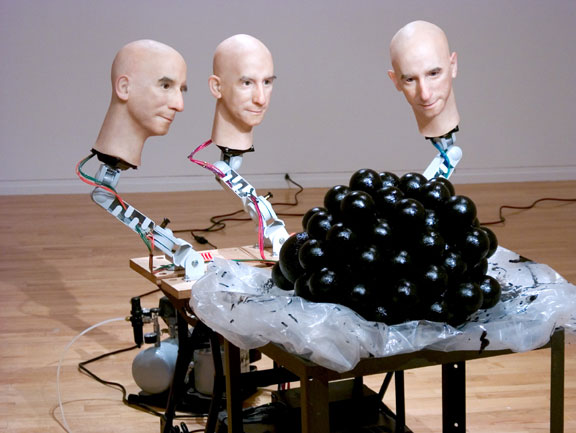
The Animal, Vegetable, Mineralness of Everything by Ken Feingold is an animatronic sculpture that consists of three talking heads surrounding a bulbous object. Each head has a distinct “personality”, and they make conversations between themselves and about the object at the center. The piece premiered in September 2004[1]. In the piece, all three of the […]
The Physiognomic Scrutinizer
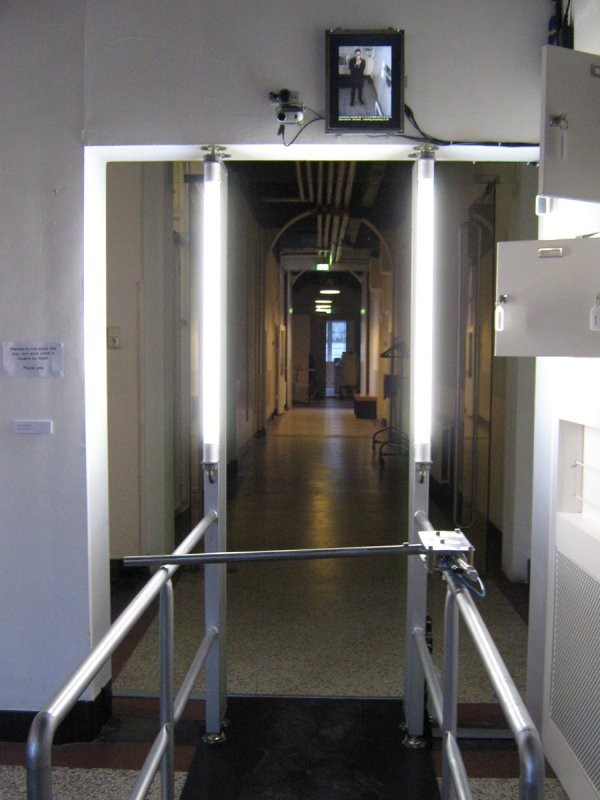
Surveillance and physical stereotyping easily go hand in hand together when explored in the context of software. Programs require fundamental placeholders for values and measurements, and to describe a person using these universal traits requires a very cold and objective approach. In 2010, the annual STRP festival in the Netherlands witnessed a new take […]
Text Rain

Text rain is an interactive piece of art that allows viewers to manipulate the motion of letters that emulate rain falling from the sky. Users have their image displayed on a screen in front of them as the letters begin to fall down the screen. Once the letters reach a certain darkness threshold, they stop […]
Dialtones Telesymphony

Dialtones, produced in 2001 by artist Golan Levin, is a musical ensemble of participant’s cellphones that is much like an auditorium-style concert. This work of art has played in many places, including its debut at the Ars Electronica Festival (Linz, Austria) in 2001 [1]. The performance is put on by a group of people, such […]
The Deleted City

In 2011, Richard Vijgen created The Deleted City. It is an interactive piece that uses the 650-gigabyte backup of Geocities. Geocities was a free webhosting provider that was set up like a city, where users were free to upload information about a topic of their choosing. Users were provided with a “free piece of land” […]
Box by The Creators Project

Bringing projection mapping to moving objections, Bot & Dolly endeavored to create an exhibit in coded form that had never been attempted before. Their creation, “Box,” sufficiently accomplished this mission through a visual and musical experience entailing two automated robots each orienting a blank 4’ x 8’ canvas in coordination with projectors and a live […]
Paramedia

Yasunao Tone is a widely known sound artist and his piece Paramedia is on the cutting edge of sound art. Curated by Arika (a community organizer) and installed at the Whitney Museum in New York, Paramedia is an intense, engrossing piece of sound art in which speakers correlated to different frequencies give […]
Future Self

View a video of the Opening Night performance here: https://vimeo.com/44089097 Future Self is an interactive light and sound installation that mimics human movement. The piece consists of hundreds of draped strands of LED lights that are suspended in the middle of a studio room in the formation of a rectangular prism. The structure remains […]
Contact: A Cybernetic Sculpture

Created by renowned Cybernetic artist Les Levine in 1969, Contact: A Cybernetic Sculpture is a wall of 18 CRT television screens arranged as a pair of three by three grids which show video of the viewer through close-up shots, wide-angle imagery, and a simple medium range portrait. Using an array of eight cameras contained in […]
Suicide Machine Sand
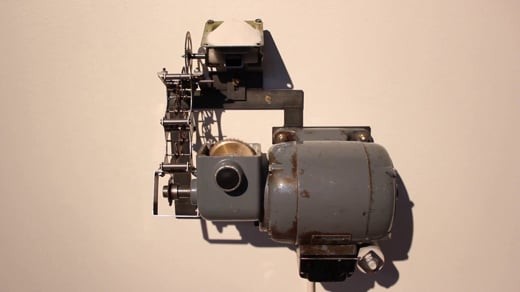
Suicide Machine Sand is a work from artist Thijs Rijkers which explores the concept of self destruction in in a maner that is both thought provoking and highly unsettling. Its function is to slowly tilt a small plate on which rests a pile of sand. The sand pours into its own gearbox, wearing down and […]
“Remagine” by Olafur Elisson
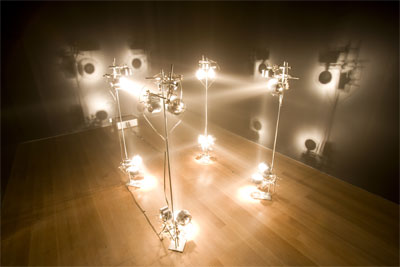
(Source: MoMA) Created by Olafur Eliasson, “Remagine” has been featured in various exhibitions by the artist. It was first displayed at the Musée d´Art Moderne de la Ville de Paris, France in 2002, then in “Take your time” at the San Francisco Museum of Modern Art, 2007, and finally in an […]
Life Support Systems – Vanda
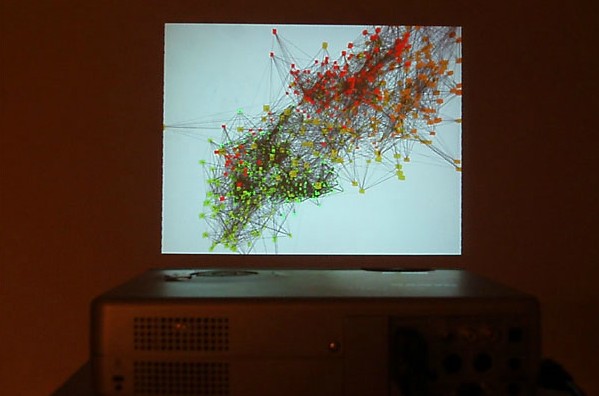
In Mateusz Herczka’s work Life Support Systems – Vanda (2004), he seeks to expand the human’s ability to map complex systems with the aid of technology. Herczka comments on the nature of this specie’s existence. “They grow on tree branches with the roots exposed, and they collect water from the morning air. The body of […]
Epigenesis: The Growth of Form
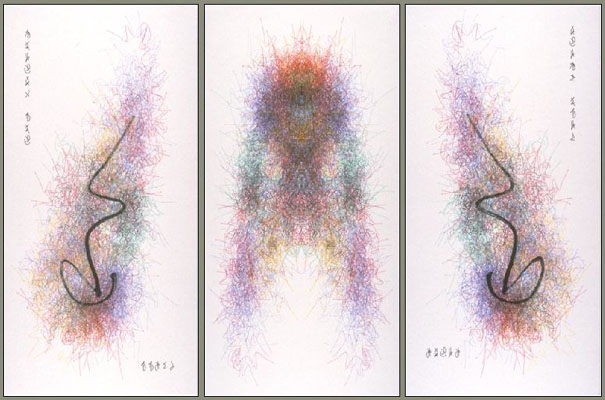
“Epigenesis: The Growth of Form” by artist Roman Verostko is an installation at the Frey Science and Engineering Center in St. Paul, Minnesota. [1] The work was installed in 1997, after a year of work, in the newly opened building. The installation, often referred to as a mural, is made up of eleven individual sheets […]
Leo Villareal’s – Bay Lights

Next time you plan a road trip to San Fran, don’t be alarmed when crossing the Bay Bridge around 8:30 PM from now until 2015. Standing 500 feet high and stretching over a mile and a half long, The Bay Lights installation is bound to surprise and grasp the attention of a few drivers. This […]
Sound Wall

Peter Vogel’s 2009 Sound Wall is unique in that can be viewed as a standalone sculpture made out of hundreds of photocells and electronic circuits, but also has an interactive sound element that is activated by passing a shadow over specific circuits creating a dynamic user exclusive experience and musical composition. Peter’s ideas for Sound […]
Celestial Mechanics
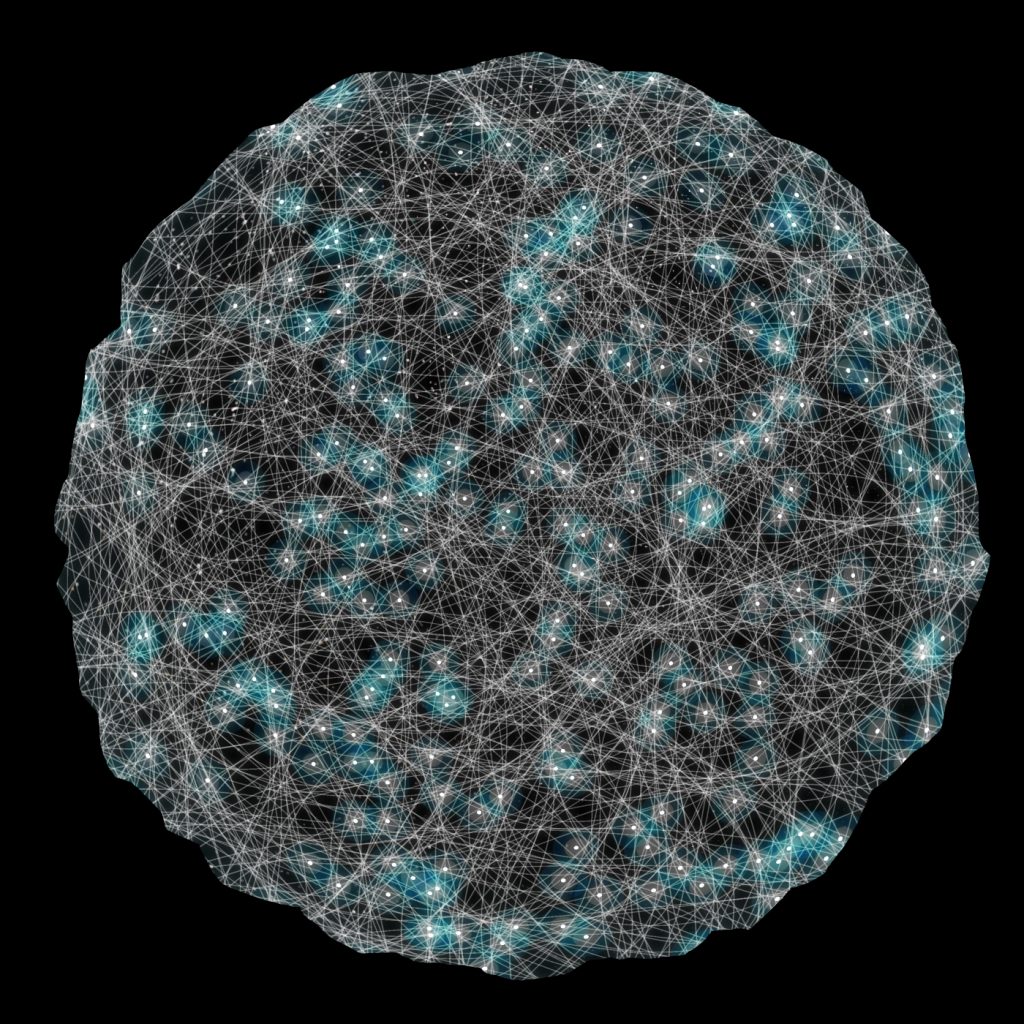
It is a busy sky, indeed. Celestial Mechanics is a artwork created by Scott Hessels and Gabriel Dunne in 2005. It presents something much closer to home than one might think. Its purpose is to show what is right above us in the skies in the forms of low orbiting satellite pathways. Every satellite, […]
The Internet Mapping Project
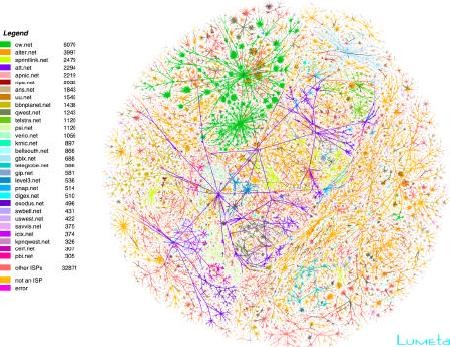
If one could actually see and visualize the virtual Internet world, what would it look like? According to the results of the Internet Mapping Project, the online web appears to be much like a complex tree of many overlapping and connecting branches. The Internet Mapping Project is a colorful digital artwork created by computer scientist […]
“test pattern” by Ryoji Ikeda

“test pattern” is an ongoing audiovisual project by Ryoji Ikeda that features an intense cascade of black-and-white bar-codes synchronized to electronic music. To be precise, “test pattern” is a system that converts all kinds of data into a visual pattern. This pattern predominantly consists of black and white bars representing the binary of digital information. […]
METRO Re/De-construction
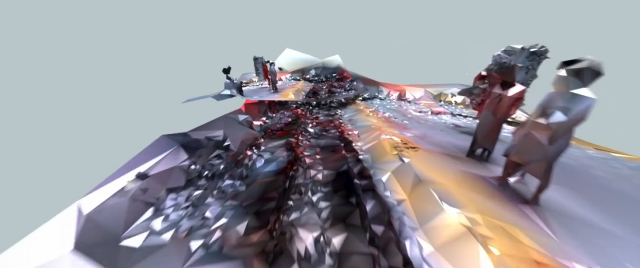
METRO Re/De-Construction is a 6 minute video compilation of a series of 3D rendered scenes from a trip along the Denver Light Rail. Artist Chris Coleman created this thought provoking animation by bringing a handheld 3D scanner onto the train he takes to work every morning. He scanned the inside of the light rail cars […]
Nocturnal Flow
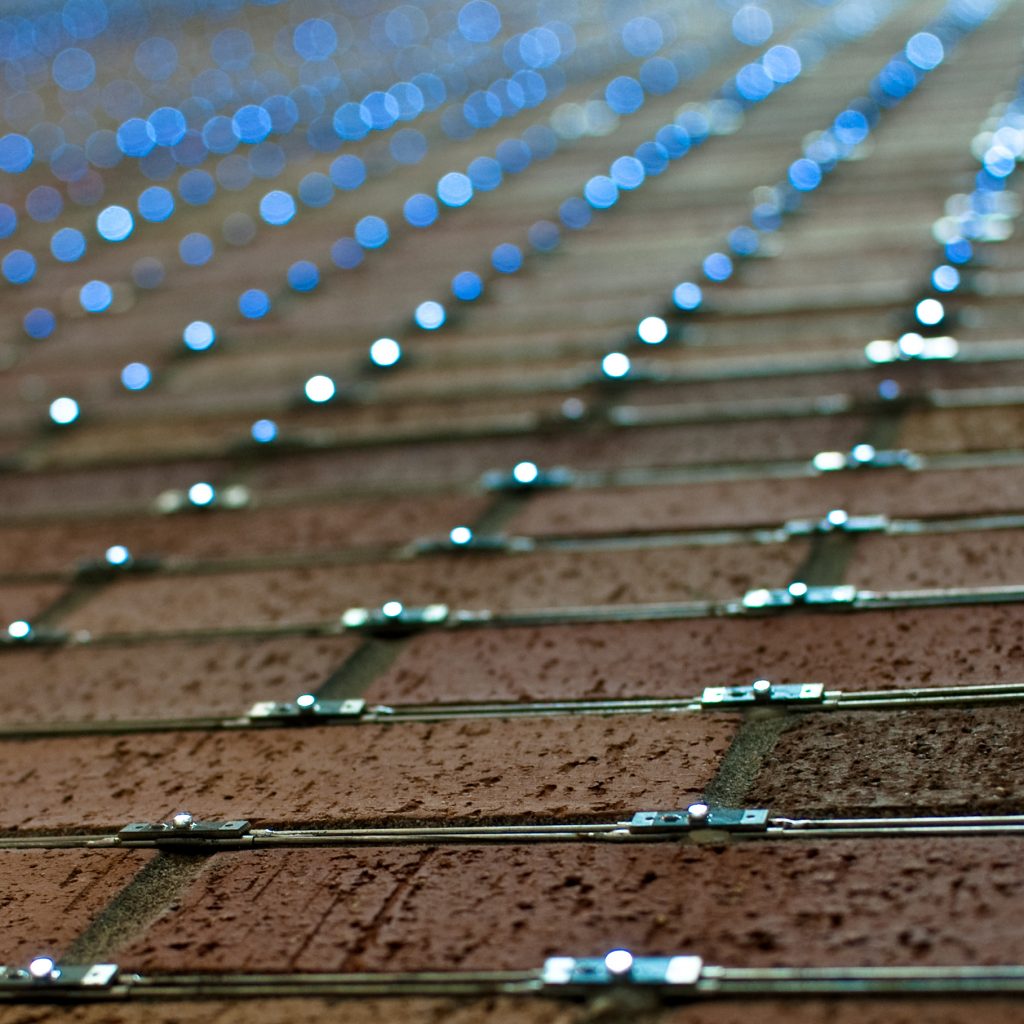
"Nocturnal Flow" is an installation created by artist Erwin Redl, who has done a number of similar pieces around the world involving LED lights. [1] Nocturnal Flow is housed in the atrium of the University of Washington's Paul G. Allen Center and consists of a grid of 17,400 LED lights, which cover the 85-foot brick […]
Sanctum
The LED Kimono Project
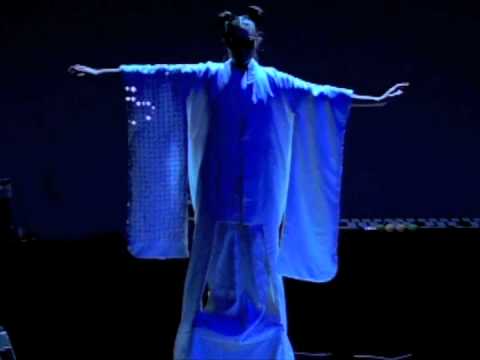
 Miya Masaoka's LED Kimono Project is an installation based, performance piece in which 444 hand-sewn LED light sensors respond to musical and physical conditions. The artist's website, http://www.ledkimono.com/ describes how the instrument/garment is used and offers insights to her mission: "The LED Kimono Project represents an extension of and an expansion upon the large body of work that I have developed in the last decade addressing interactivity with insects, plants, and the human brain."
Miya Masaoka's LED Kimono Project is an installation based, performance piece in which 444 hand-sewn LED light sensors respond to musical and physical conditions. The artist's website, http://www.ledkimono.com/ describes how the instrument/garment is used and offers insights to her mission: "The LED Kimono Project represents an extension of and an expansion upon the large body of work that I have developed in the last decade addressing interactivity with insects, plants, and the human brain."
Brushstroke

 Taking the ideological cluster of gesture, authenticity and originality as his foil, in the mid-1960s, artist Roy Lichtenstein caricatured the abstract expressionistic brush-stroke in a cartoon style with a background comprised of Ben-Day dots – a commercial printing technique used by newspapers to reproduce cartoons. Paradoxically, he initially mocked this eviscerated but iconic signifier in a series of unique paintings, only later reproducing them as serigraphs.
Taking the ideological cluster of gesture, authenticity and originality as his foil, in the mid-1960s, artist Roy Lichtenstein caricatured the abstract expressionistic brush-stroke in a cartoon style with a background comprised of Ben-Day dots – a commercial printing technique used by newspapers to reproduce cartoons. Paradoxically, he initially mocked this eviscerated but iconic signifier in a series of unique paintings, only later reproducing them as serigraphs.
Electronic Peristyle

 This interactive art installation or “reactive environment,” to use the artist’s term, was first shown at the William Nelson Rockhill Gallery of Art in Kansas City as part of the Magic Theater exhibition in 1968. Developed with the assistance of Robert Moog, the pioneering inventor of electronic musical instruments, Electronic Peristyle employs digital circuits to control a sound synthesizer, fans, and lights. Twelve electronic columns surround a transparent globe set on a cylindrical base. Light beams emitted from the base, like spokes on a wheel, strike sensors on the columns. By breaking the beams, the participator alters the sound, light patterns, and wind effects.
This interactive art installation or “reactive environment,” to use the artist’s term, was first shown at the William Nelson Rockhill Gallery of Art in Kansas City as part of the Magic Theater exhibition in 1968. Developed with the assistance of Robert Moog, the pioneering inventor of electronic musical instruments, Electronic Peristyle employs digital circuits to control a sound synthesizer, fans, and lights. Twelve electronic columns surround a transparent globe set on a cylindrical base. Light beams emitted from the base, like spokes on a wheel, strike sensors on the columns. By breaking the beams, the participator alters the sound, light patterns, and wind effects.
Interactive Paper Systems

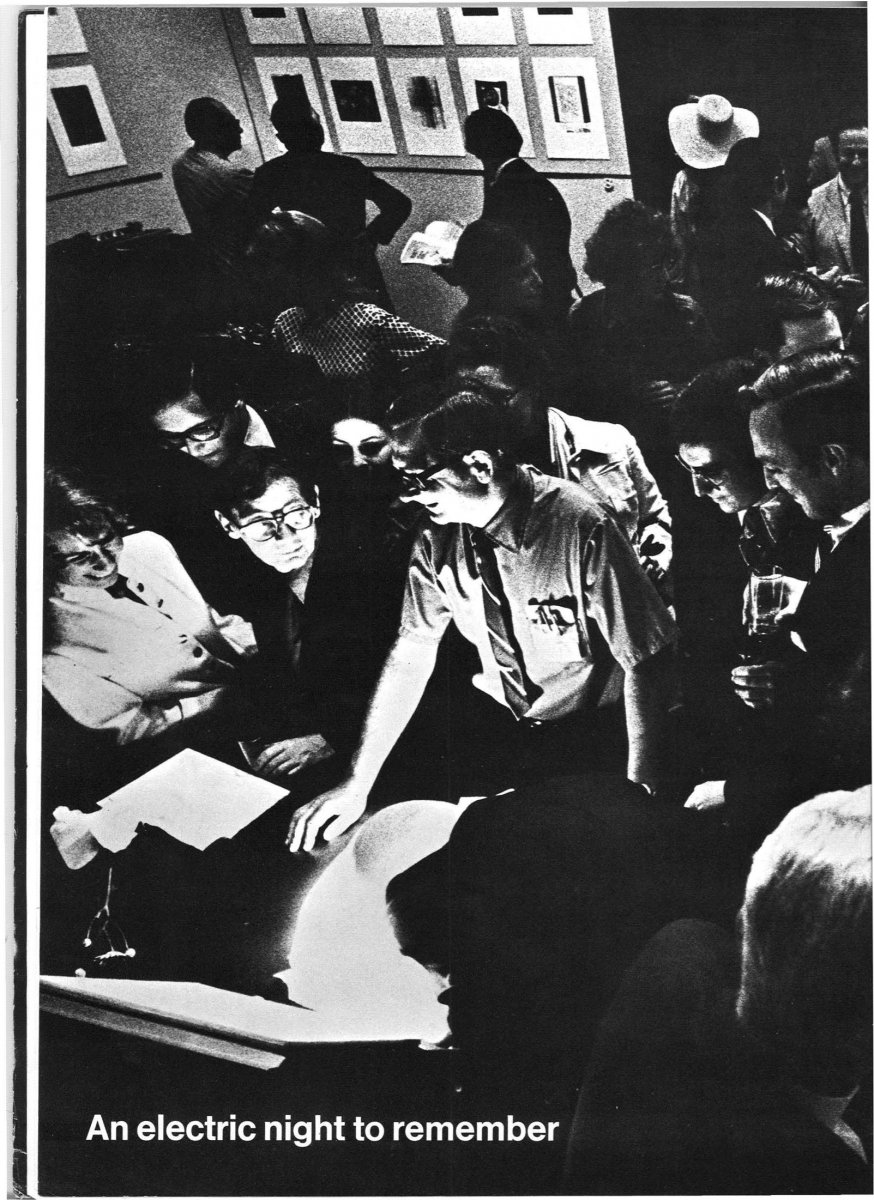 In 1969, art historian and media theorist Jack Burnham approached artist Sonia Sheridan about participating in an exhibition he was organizing at the Jewish Museum in New York for the following year. The exhibition, entitled “Software,” exposed the public to a wide variety of perspectives concerning the functional applications of information processing systems.
In 1969, art historian and media theorist Jack Burnham approached artist Sonia Sheridan about participating in an exhibition he was organizing at the Jewish Museum in New York for the following year. The exhibition, entitled “Software,” exposed the public to a wide variety of perspectives concerning the functional applications of information processing systems.
Sheridan’s installation consisted of the new 3M color-in-color photocopying machine, which the audience was permitted to interact with and make their own instant images. On working with this medium, Sheridan has stated, “It is obvious that this work process becomes another kind of time for the artist as the distance from conception to conception is reduced to minutes and objects change as rapidly as thinking allows.”
Installation view at opening of Software exhibition at the Jewish Museum in New York, 1970. Image from exhibition catalog. Photo: Shunk-Kender.
The True Artist Helps the World by Revealing Mystic Truths
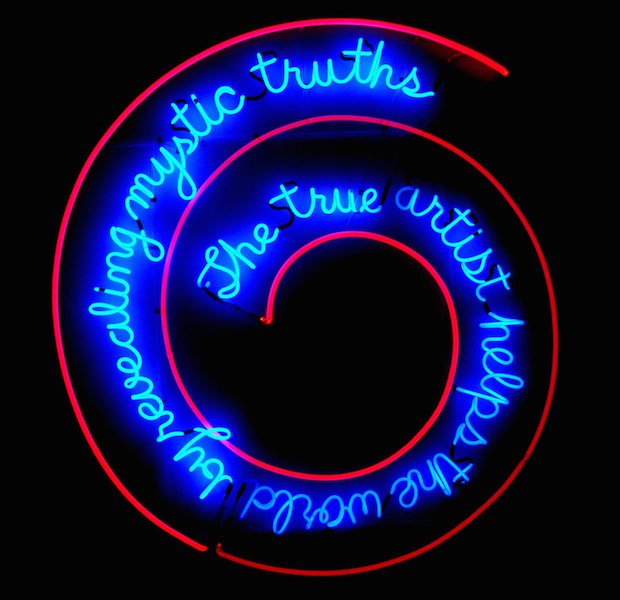
Bruce Nauman’s 1967 neon sign asks a multitude of questions with regard to the ways in which the 20th century conceived both avant-garde art and the role of the artist in society. If earlier European modernists, such as Mondrian, Malevich, and Kandinsky, sought to use art to reveal deep-seated truths about the human condition and […]
The Quintet of Remembrance
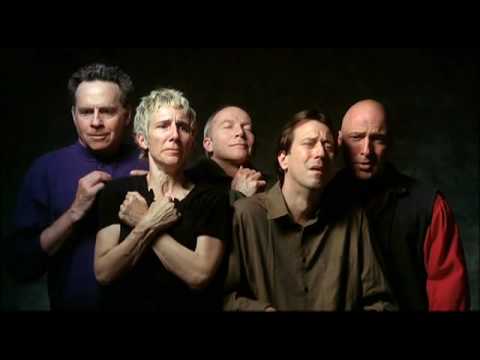
This article is a STUB please make edits and adjustments as suggested on Wikipedia to make it more robust. Thanks! Video art was first introduced in the early 1960s by such pioneers as Nam June Paik and Bruce Nauman and continues to be a vital form of contemporary artistic expression. Since the […]
Organe et Fonction d’Alice au Pays des Merveilles
Ascott created Organe et Fonction d’Alice au Pays des Merveilles (Organ and Function of Alice in Wonderland) for Les Immateriaux, the exhibition curated by Jean-Francois Lyotard at the Centre Pompidou in Paris in 1985. Organe et Fonction was accessible to anyone connected to Minitel (the French national videotex system begun in 1981). Ascott’s use of […]
Mud Muse

This great construction of driller’s mud and sound-activated electronics to make it bubble and splash is the most totally bizarre and ‘concept-less’ piece in [Rauschenberg’s] oeuvre. [It] had to be watered and mixed daily. It must be taken care of and interacted with to function. The piece uses “ocean sounds, animal sounds, some generated […]
Giant Ice Bag

‘I am for an art … that does something other than sit on its ass in a museum,’ stated Claes Oldenburg in 1961.[1] With the production of his mechanised ‘Icebags’ in 1971 this desire was realised. Icebag—scale B moves almost imperceptibly in the exhibition space, slowly winding and undulating this way and that, creating the […]
The Virtual Museum
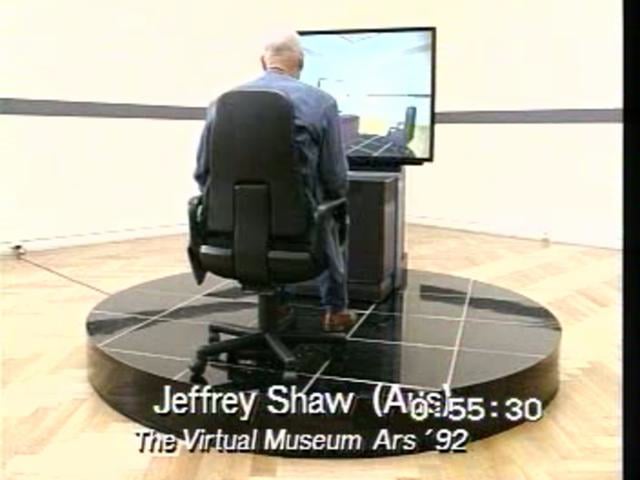
This article is a STUB please make edits and adjustments as suggested on Wikipedia to make it more robust. Thanks! An exact reproduction of the exhibition space is shown on a large monitor placed on a circular, motorized platform. Sitting in front of the screen in an armchair, visitors can navigate their […]
The World Generator

This article is a STUB please make edits and adjustments as suggested on Wikipedia to make it more robust. Thanks! The World Generator was developed in 1996/97 with programmer Gideon May and specifically enlarged for “p0es1s.” Participants can use this digital machine to generate, in real-time, virtual surroundings out of different digital […]
Frontiers of Utopia

Frontiers of Utopia» is the final part of an interactive series exploring the «history and nature of idealism, technology and design». In the first two parts, «Machinedreams» (1991) and «Paradise Tossed» (1993) the relationship between desire, design and memory was explored in a stylised and dreamy manner. The viewer was able to construct a collage […]
Lover’s Leap

This article is a STUB please make edits and adjustments as suggested on Wikipedia to make it more robust. Thanks! Lovers Leap, 1995 Interactive environment produced in two forms simultaneously as an interactive multimedia installation (using the viewer’s body as a triggering device) and as a CD-ROM (using the viewer’s hand as […]
The Forest

This article is a STUB please make edits and adjustments as suggested on Wikipedia to make it more robust. Thanks! After finishing the computer animation version of “The Forest”, Waliczky began to work on the second, interactive variant of “The Forest”, in collaboration with Jeffrey Shaw and Sebastian Egner. Here, the animation […]
Portrait One

This article is a STUB please make edits and adjustments as suggested on Wikipedia to make it more robust. Thanks! “Portrait One (1990) by Luc Courchesne is a fictional work and a framed encounter with a character. But unlike other interactive works, it is not a narrative piece, as multi layered […]
Bar Code Hotel

This article is a STUB please make edits and adjustments as suggested on Wikipedia to make it more robust. Thanks! Bar Code Hotel (1994) recycles the ubiquitous symbols found on every consumer product to create an multi-user interface to an unruly virtual environment. The installation makes use of a number of strategies […]
SEE BANFF!

SEE BANFF! is an interactive stereoscopic installation. It bears a strong – and intentional – resemblance to an Edison kinetoscope, which made its public debut in 1894, a century before contemporary artist Naimark revisited it using late 20th century technologies. The kinetoscope achieved instant popularity, but was short-lived. One and a half years later, in […]
Placeholder

Brenda Laurel is a designer, researcher and writer. Her work focuses on interactive narrative, human-computer interaction, and cultural aspects of technology. Her career in human-computer interaction spans over twenty-five years. She holds an M.F.A. and Ph.D. in theatre from the Ohio State University. Her doctoral dissertation was the first to propose a comprehensive architecture for […]
Spectral Bodies

Spectral Bodies 1991 – artist statement from http://www.catherinerichards.ca/artwork/spectral_statement.html Spectral Bodies is a videotape that considers the issues at stake around simulation and subjectivity in contemporary technology. Specifically, it is concerned with virtual reality technology, which literally reads and writes our bodies. Using emerging technology, it traverses the boundaries between the imaginary and the >real= in the […]
